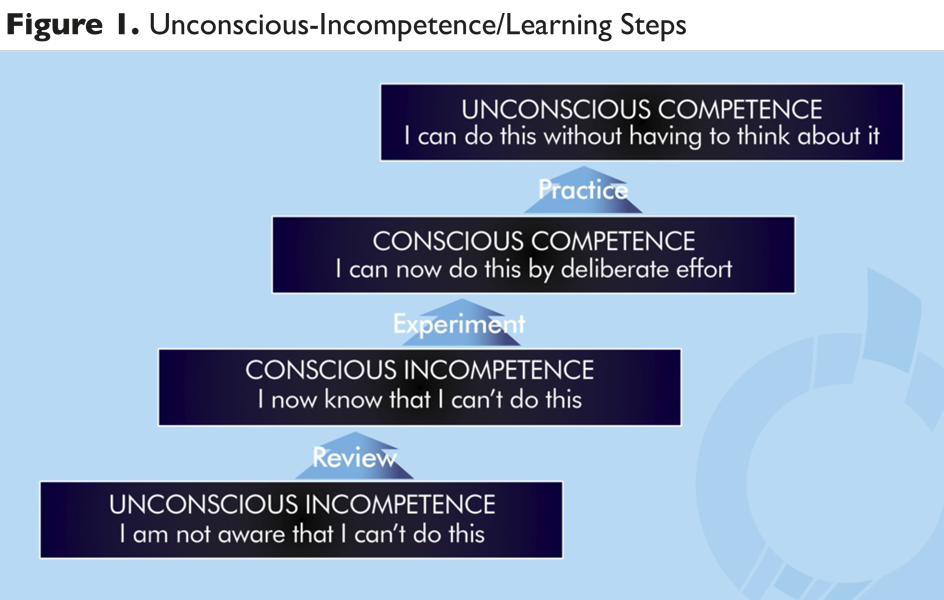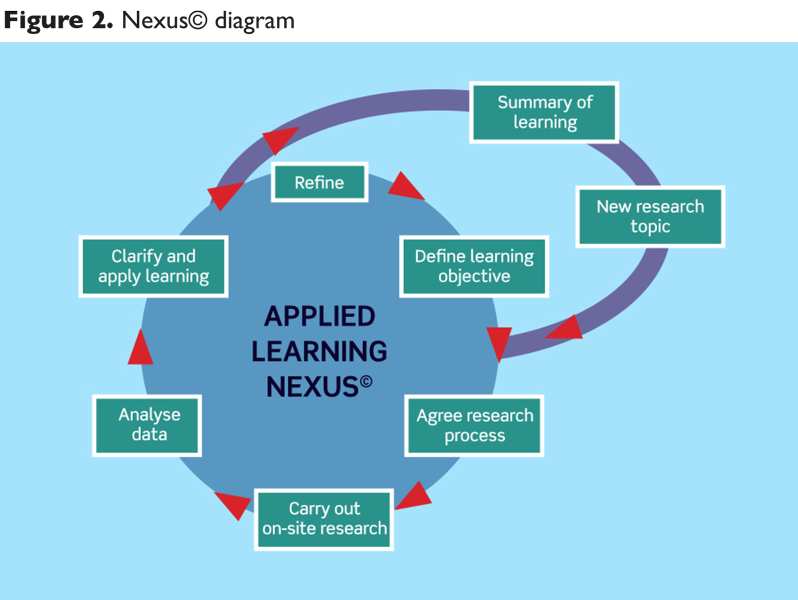You may know about leadership but can you lead? One you learn from a book or a course, the other through repeated trial and error in the real world of work. The difference is critical when you need to ensure you get a healthy return on investment from leadership development. John Sutherland introduces the Nexus process specifically designed to ensure the development of wise owls: leaders with practical mastery.
Phil Has a Light Bulb Moment
Phil attended a leadership programme, and returned to his desk filled to the brim with clever ideas and models. He enthused about the course, which he found utterly fascinating, especially all the input on the so-called “soft skills” (which he affectionately referred to as “psycho-babble”). But there was a problem: Yes, he had a light bulb moment, but it was only 25 watts. Six months later, no one had seen any change in his actual leadership behaviour. For sure, he was a walking encyclopaedia of conceptual slides, but the collaborative skills he went off to learn were marked by their absence. He still became defensive when others offered alternative views and his colleagues continued to manage around him for the next two years. What had gone wrong?
Phil had learnt about leadership, but had not learnt how to lead, and there is a crucial difference. You learn about leadership when you read a management book or attend a course. But learning how to lead means deliberately developing practical mastery, through repeated trial and error, until you find a process that works for you, and gets the intended results in the real world of work. Leadership models help point the way, by offering insight, but the path to mastery requires sustained effort and, usually, some discomfort during the learning process. You have to be willing to make mistakes in order to learn.
It turns out that there are a lot of leadership courses like the one Phil attended where the net result is a zero return on investment, and this is becoming a real issue for business. We need to ensure that the investment made in the “value on legs” (that’s “people” to you and me) gives a healthy return. This is especially pertinent in war-for-talent sectors where the talent may use its legs to walk out to join the competition, if it does not think it is being developed in role.
So how do you develop genuine leadership at a practical level of mastery? The first step is to be clear about how adults learn, and learn to the point where there is a clear change in behaviour.
Learning Steps and the Nexus Process
Noel Burch developed a model of learning steps, which is sometimes wrongly attributed to Maslow. Although developed in the 1970s, it is still relevant today and, if anything, is even more compelling now that we are our able to see the way the brain creates new high-speed neural pathways as it learns. For highly practiced skills, such as in professional sports and music, the brain actually shows physical changes due to the creation of new learning connections, allowing these messages to travel easily and quickly. To become masters at leadership we also need to have enough practice to get to the point where our new way of leading has become a well-learnt routine. Having had a lifetime of being defensive, Phil had not given sufficient time to the practice of really listening to his colleagues with an open mind. His old defensive routine remained the easiest and quickest route.
Leadership workshops focus on the reviewing and experimenting phases of the learning steps. Vital for beginning the process towards mastery – unconscious competence in this model, but not sufficient in and of itself – to establish new neural pathways. That needs more time and can require weeks or months. By design, therefore, the vast majority of leadership programmes are set to fail. Sure, they may provide a follow-up some months after the initial workshop, where they hope participants will return with stories of how they triumphed, putting their skills into practice. All too often, the sorry tale is that their best intentions got lost in the myriad of operational priorities that hit them like a tsunami on their return from the course. Even those who make early progress with a new skill often report losing momentum because their progress was not reviewed and supported on a regular basis. The follow-up becomes just another date in the diary for an event that fades in the memory during the months that follow. Something much more robust is required to support the repeated practice of new leadership skills until they are mastered at a practical level, and used to great effect day to day.
With this in mind we have developed the Nexus© process, after many years of experimenting with different forms of on-site practical learning. It is based on five principles, all designed to provide a robust and reliable process for supporting learning during “business as usual”.
1. Just the right amount of structure
Over the years we have tried everything, from expecting leaders to evolve their own structure, to directing each step of the way and setting “homework”. Unsurprisingly, neither extreme works. With too little structure, a lot of time is wasted discussing how the emerging leaders are going to work together. Too much, and it removes the ability of leaders to exercise choice in their learning focus, and it becomes more like a taught course rather than a true leadership programme. Just the right amount, like the bowl of porridge that Goldilocks devoured, is perfect.
What is “just right” tends to vary from business to business; but, as a place to start, we recommend delegates work in groups of between three and six and choose one main priority area to focus on each month. It is their job as leaders to ensure that the objective they choose is relevant to the business, and is something each group member can directly address. They actively try out different ways of making progress with the objective over the month, using ideas they heard about during the course, but also learning from each other. They meet after a fortnight to compare notes, swap ideas and insights, and refocus their efforts for the next two weeks. At the monthly meeting we provide a facilitator who helps them gather their individual and collective learning, and choose the theme or objective for the following month.
2. A small group who learn together
Developing practical mastery requires stamina and resilience. Ask any sportsman or musician about the many hours of work they put in before they were “suddenly discovered overnight”. It is all too easy to set off with good intentions (like that diet) and find that a few weeks in you have lost your resolve. This is especially true when the focus is developing emotional competence, where you need strong leverage over yourself to manage the discomfort involved in challenging and changing old, baked in, habits that no longer serve you.
Being part of a small group of between three and six people has several benefits. Firstly, the commitment you make to each other firms up the collective resolve to see the learning through. Secondly, if you are all focussed on developing similar leadership skills, you benefit from each other’s experience. Thirdly, even if, in the final analysis, how you lead as a unique individual is subtly different from how your peers lead, it is still very useful to learn from their successes and failures and they, of course, will benefit from your learning.
3. Focus the learning on your key strategic objectives
Now this may sound obvious but it is worth stating. Assuming you are not a generic business, you do not need a general leadership programme. You are unlikely to need seven habits or seven questions or any other “tried and tested” model. It is more likely that you want your leaders to be busy developing the precise individual and team skills required to move the dial on your key metrics. You probably need to achieve your business plan and hit the numbers in the current year.
So if, for example, you have six high level strategic objectives, focus your Nexus group learning on one objective a month and measure their progress against your usual metrics. Your leaders can choose the order in which they work on them, based on their opportunities and needs. And, of course, there is nothing like having a compelling need, such as a personal objective or KPI, to focus the mind.
4. Include emotional competence
Hans had recently finished a two-day course on coaching but had not improved his coaching skills. No amount of theory made any difference to the discomfort he felt in confronting poor performance. For Hans, like many of us, the key to unlocking his leadership potential lay hidden beneath an old emotional scar that limited his choices.
So, alongside the strategic objective our Nexus groups select each month, we also strongly encourage each person to continue their journey with emotional competence. It is crucial work and not easy to do, which is why so many leadership programmes ignore this element if they can. It means moving past the review phase to the experimental stage of the learning steps model, where we deliberately try a new action, until we find an effective way of turning tension into traction.
You have to have leverage over yourself in order to make progress with emotional competence, and that is much easier to do when you are working with others who are on the same journey. Think more “marathon” than “sprint”, and you will get the picture. I plan to write more on this fascinating area in a subsequent article.
5. A process that becomes self-sustaining
If you have satisfied all the four points so far, you will now have a group who have become self-reliant and know how to continue their learning without any further facilitation. This is excellent news for you, because it means you have a delivery mechanism to build future value for no further cost.
Our experience has been that most Nexus groups become self-sustaining after five monthly supervision sessions. It has by then become an effective, simple and efficient learning group of peers who know how to challenge and support each other, and keep themselves focussed on the strategic objectives of their organisation. If, like me, you believe that learning is for life, then being part of a peer group that sees the value in carrying on their journey together is highly rewarding.
Conclusions
For Phil it all ended well, eventually. Two years later, the team he had been working with went on a leadership team programme and the team became his Nexus group. They learned together, and used each meeting to refine their skills and to remind each other of their personal and collective learning objectives. He finally got to unlock the emotional competence issue that had acted as the handbrake on his progress to date – his need to feel in control. This time his light bulb moment kept glowing.
About the Author
John Sutherland is the Director of the Leadership Initiative, which provides leadership development focussed on delivering the business plan and producing a solid return on investment. He also runs Strategic Resource, which provides a suite of services for the investment community.
john@leadership-initiative.co.uk +44 15394 66000





































